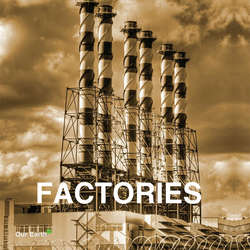Читать книгу Factories - Victoria Charles - Страница 3
Introduction
ОглавлениеFactories, with their towering smokestacks, structured assembly lines and massive facilities, stand as powerful symbols of efficiency and productivity. Originating in Great Britain, industrialisation began to spread throughout Europe in the late 18th century. The Industrial Revolution, thus proliferated, sparked a complete transformation of socio-economic activity. Catalyst of modern times, this period was fuelled by several inventions and discoveries that drastically improved the efficiency of certain industries. For example, in the textile field, modernisation transformed the weaving profession from a craft to a veritable industry. New forms of energy were introduced, particularly the steam engine, which permitted the conversion of thermal energy into mechanical energy, revolutionising modes of transportation and, therefore, commerce.
Throughout the 19th century, people left their lands in the countryside to work at the factories, which claimed to guarantee better earnings. This rural exodus therefore took place to the benefit of a more promising urban world.
These major changes, which affected social organisation and the relationships between different social classes, triggered the emergence of a middle class eager for new products to consume. At the beginning of the 20th century, factories became more and more important, encouraging economic growth.
After World War II, a large part of European industry, which had been destroyed, and American war industries were transformed into industries of consumption. New production techniques were put into place, particularly driven by a working class who was tired of the Taylorism that had been established in the late 19th century, and who hoped to rediscover a form of personal growth through work. New management techniques led to fundamental changes in the way people worked, and, little by little, sites of production were abandoned.
Factories often represent ideal sites for urbanisation, and several cities have transformed their old, run-down industrial districts into trendy, spacious housing and commercial areas that attract businesses and middle- to upper-class inhabitants, regenerating economic growth in neighbourhoods formerly neglected or impoverished.
However, as rapid worldwide industrialisation plays a primary role in air pollution, the production of toxic waste and greenhouse gas emissions, which are key causes of global warming, active factories are at the centre of heated environmental debates. This is why the Kyoto Protocol, signed in 1997, aims to fight against climate change by reducing carbon gas emissions. Effective as of 2005, it has so far been ratified by 189 countries.
Preserved vestiges of an industrial past, areas of contemporary life or active centres of industry attempting to adapt to modern concerns, factories remain key elements in daily life into which art so often invites itself, transforming utilitarian buildings into remarkable architectural works and surprisingly beautiful, unconventional works of art.
Zollverein Coal Mine (hoist), Essen, Germany.
